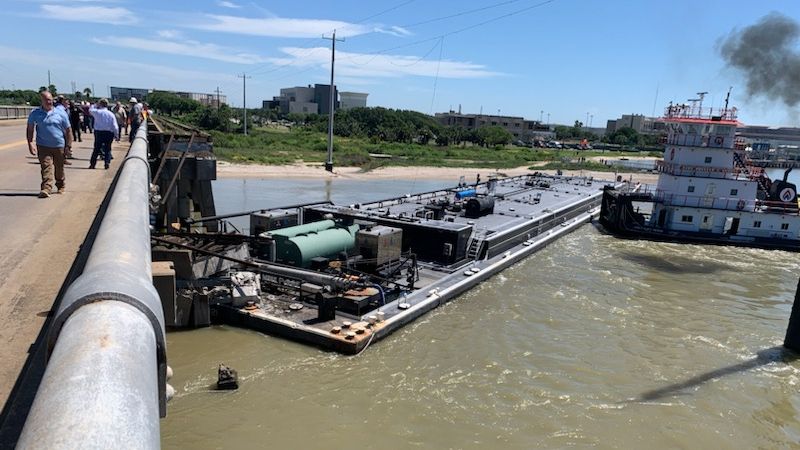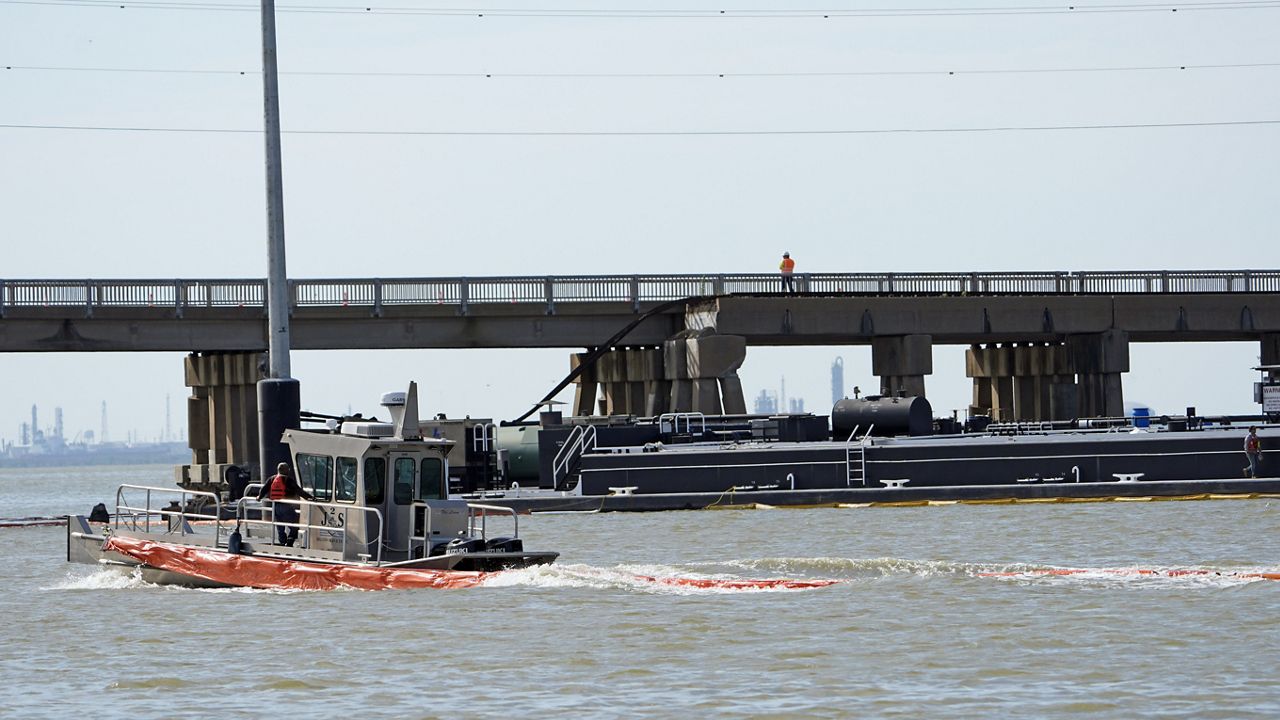GALVESTON, Texas — The bridge connecting Galveston, Texas, to Pelican Island remained closed Thursday after a barge crashed into a pillar supporting the span, causing it to partially collapse, and a university urged staff and faculty to leave its campus there.
The accident happened Wednesday morning when a tugboat pushing two fuel barges lost control of them and one hit the structure, said David Flores, a bridge superintendent with the Galveston County Navigation District. The bridge provided the only road access between Galveston and the small island.
Oil leaking from the barge led to the closure of about 6.5 miles of the waterway. The barge, owned by Martin Petroleum, has a 30,000-gallon capacity, but officials have not said how much leaked into the bay.
The Coast Guard did not immediately respond to questions Thursday morning regarding the status of the oil spill.

Meanwhile, the barge remained beside the bridge, weighed in place by debris including rail lines that fell onto the vessel when the crash happened.
Texas A&M University at Galveston recommended temporarily vacating the island.
“Given the rapidly changing conditions and uncertainty regarding the outage of the Pelican Island Bridge, the Galveston Campus administration will be relocating all Texas A&M Pelican Island residents," through at least Sunday, it said in a statement late Wednesday.
Fewer than 200 people related to the school were on the island when the barge hit the bridge, according to the school.
Spokesperson Shantelle Patterson-Swanson said the university would provide transportation and cover the housing costs of those who choose to leave, but underlined that the school has not issued a mandatory evacuation.
Aside from the environmental impact of the oil spill, the region is unlikely to see large economic disruption as a result of the accident, said Marcia Burns, a maritime transportation expert at the University of Houston
The affected area is miles from the Gulf Intracoastal Waterway, which sees frequent barge traffic, and the Houston Ship Channel, a large shipping channel for ocean-going vessels.
The accident came weeks after a cargo ship crashed into a support column of the Francis Key Bridge in Baltimore on March 26, killing six construction workers.
At the bridge, a large piece of broken concrete and debris from the railroad hung over the side and on top of the barge that rammed into the passageway. Flores said the rail line only serves as protection for the structure and has never been used.
History of the bridge, maintenance
Opened in 1960, the Pelican Island Causeway Bridge was rated as “Poor” according to the Federal Highway Administration’s 2023 National Bridge Inventory released last June.
The overall rating of a bridge is based on whether the condition of any of its individual components — the deck, superstructure, substructure or culvert, if present — is rated poor or below.
In the case of the Pelican Island Causeway Bridge, inspectors rated the deck in “Satisfactory Condition,” the substructure in “Fair Condition” and the superstructure — or the component that absorbs the live traffic load — in “Poor Condition.”
The Texas Department of Transportation had been scheduled in the summer of 2025 to begin construction on a project to replace the bridge with a new one. The project was estimated to cost $194 million. In documents provided during a virtual public meeting last year, the department said the bridge has “reached the end of its design lifespan, and needs to be replaced.” The agency said it has spent over $12 million performing maintenance and repairs on the bridge in the past decade.
The bridge has one main steel span that measures 164 feet, and federal data shows it was last inspected in December 2021. It’s unclear from the data if a state inspection took place after the Federal Highway Administration compiled the data.
The bridge had an average daily traffic figure of about 9,100 cars and trucks, according to a 2011 estimate.



